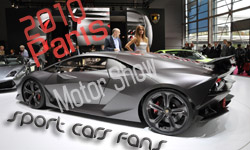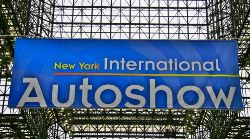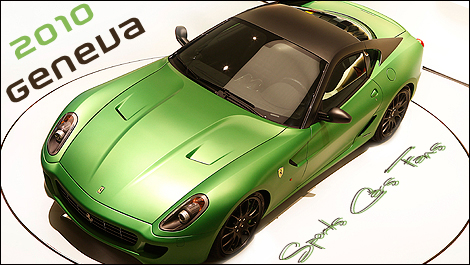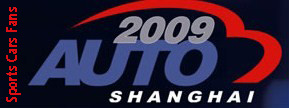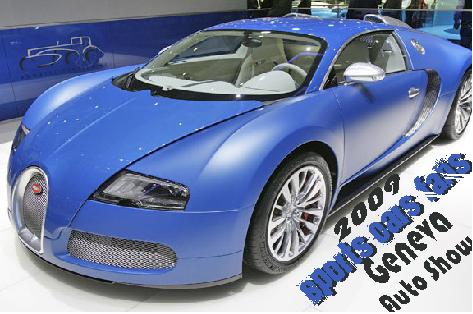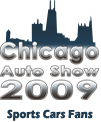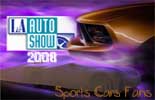First Drive: 2010 Ford Taurus

Ford's marketers and PR types have a tremendous task ahead of them: Educating the American consumer on what company's new Taurus is all about. It's a Herculean task that amounts to nothing more than rebuilding a brand that was once broadly considered an icon – not just of the auto industry – but of American business at large.
Fortunately for the Blue Oval team, they may have an ace-in-the-hole. As we learned driving the 2010 Ford Taurus through Tennessee and North Carolina's Smoky Mountain roads, this new bull shows promise and takes the marque upscale like never before. But be under no illusions – this is a risky move. The Taurus name has never been extended upmarket like this before (let alone in such a waterlogged economy), and it isn't immediately clear who the model's competitors are – a detail that could prove problematic when trying to target customers.
The Chicago-built Taurus is no longer a logical Toyota Camry, Honda Accord and Chevrolet Malibu cross-shop – that's the Fusion's turf now. In size, technology, and aspirations, Ford is pushing its new sedan several of rungs up the ladder. Is it the right product for the right time? Perhaps of more immediate concern, is it carrying the right name and will Ford be able to overcome the Taurus brand's baggage and sell America on its virtues?
A big suit to fill?
As we tried to come to terms with the Taurus during our drive, we couldn't escape a few bars of a Talking Heads song. Specifically: "And you may find yourself behind the wheel of a large automobile... and you may ask yourself – well, how did I get here?" Similarly, in order to appreciate just how radical a departure this 2010 Taurus is, one has to appreciate where the model has been. This is not "same as it ever was" – not by a long shot. Allow us to recap:
Back when it was introduced in 1985 as a 1986 model, the original Taurus was nothing less than a watershed family car. Forward-thinking with advanced aerodynamics and a vehicle platform to match, it was a car the likes of which Detroit had never produced and mainstream America had never had the opportunity to buy. The surging Japanese imports sat up and took notice, as did U.S. consumers and the automotive press, both of which fell in love with the distinctive "jelly bean" sedan. Taurus was a smash hit both critically and in terms of sales, but unfortunately, America's warm cockles didn't last.
While the second-generation model (introduced for 1992) didn't do much to alter the love affair, subsequent models clouded the Taurus' brand identity and found Ford floundering about trying to determine what consumers wanted out of a mid-sized sedan. In the case of the guppy-mouthed 1996 model, that floundering bordered on literal, as the Jack Telnack designed third-generation Taurus drew ire for its fish-like avant-garde styling and form-over-function utility.

The long-serving 2000-2007 model year updo that followed corrected some of the third-generation Taurus' oversights (i.e. limited trunk space and rear seat headroom), but by then, the Japanese had plus-sized their own offerings and turned up the wicks on their powertrains, all but confining the Taurus to also-ran status. That model would wither away and retreat into fleet-only status in the U.S. in 2006, at which point, the Blue Oval decided to supplant the Taurus with two distinct models – the smaller Fusion and the full-size Five Hundred. The latter was high riding and particularly capacious, yet the ultimately milquetoast sedan didn't connect with consumers or pundits. Thinking that the model's lackluster market response might have had something to do with the unfamiliar name, Ford would in turn exhume the Taurus moniker and slap it on the rump of a tweaked Five Hundred for 2007. It was an expedient fix, and the market recognized this move for what it was.
To sum up how Taurus went from America's hope to America's rental lots, the Blue Oval took it from an ahead-of-its-time, streamlined mid-size flagship to an oddly ovoid and unloved design statement, to a behind-the-curve, emergency badge-engineered full-size car. Along the way, there have been an array of wagons, a couple of notable high-performance SHO variants (and one forgettable one), but there has never been a Taurus quite like this new model.
Impressive new duds
One thing becomes immediately clear from the moment you clap eyes on the new variant – despite being based on the same D3 platform as the outgoing Five Hundred/Taurus sleeping pill, this is a radically different and altogether more confident and cohesive design. Oh, some might take issue with the mildly fussy three-bar grille treatment, but to put it simply, this new Taurus is ripped. Check out the bold sheet metal creases at the beltline and in the rocker panels; the strong U-form chamfering in the hood that's echoed in the trunk lid; the piercing, assertive headlamps and the 427 Concept-like rump.
This is a big car with a sizeable rear overhang (at 202.9 inches overall – it's exactly seven inches larger than a Hyundai Genesis), and it could very easily have looked lumpen or slab-sided and larded-upon like its predecessor. Instead, the Taurus' appearance is crisp and assertive, very much the proverbial linebacker in a tailored suit. Even the door mirrors are compellingly and purposefully sculpted. While the new design looks handsome in every color we've see, it truly stands out in shades like Ingot Silver and Gold Leaf; colors that yield greater definition than darker shades (Like our Tuxedo Black tester) that cover up some of the more inspired surface details.
Inside, the Taurus' modernization story continues, with a T-shaped double-hooded instrument panel that features a dramatic swept-back waterfall center console bisecting driver and passenger. All controls fall readily and logically to hand, the switchgear looks and feels good to the touch, and the ice blue backlit gauges are easy-to-read. Every 2010 Taurus steering wheel is wrapped in leather regardless of model trim, and the dashboard and door cap materials are well grained and have more give to the touch than anything in recent memory.
We could have done without the fake wood inlays, but as far as trim goes, they're a reasonable facsimile of dead tree and they don't detract from the cabin's premium ambience. The gear selector is gratuitously outsized for smaller hands, but its aesthetic keeps with the designers' wish to move the Taurus away from rental-car wallflower to broad-shouldered leading man. Whether you've stepped into an SE, SEL, or top-shelf Limited model, this is a solid, mature environment that's light years ahead of the 2009 model. Indeed, this Taurus possesses a better-executed cabin than we've seen in some luxury cars costing in excess of $10,000 more.
We can't leave our discussion of the interior without talking about some of the available niceties on this new Taurus. Judging by the presentations we sat through at the car's launch event, the Dearborn team is justifiably proud of the bumper crop of available technologies that they've crammed into their new baby. In light of its modest price point, the Taurus should be a shoo-in "Tech Car of the Year" candidate for the boys and gals over at CNET.
Not only can you get Ford's voice-activated navigation system with Sirius Travel Link (in our estimation, probably the best such system in the business – irrespective of price), but you can also get such luxury features as a gangbusters Sony Dolby 5.1 surround system with the usual connectivity options (aux, USB) plus Sirius satellite radio, Bluetooth and DVD audio, as well as a ten gig hard drive for music and image storage. There are available heated and cooled "Multi-Contoured" seats with "Active Motion" massaging, an optional power rear sunshade like on your neighbor's BMW, switchable ambient lighting, power memory pedals, and so on. And even if you don't plump for the nav system, if you opt for Sync, you can still get audible turn-by-turn directions using a paired Bluetooth phone. We tried this system and found it to be less satisfying to use than the full-on nav interface, but it's a welcome low-cost alternative and a nice safety net if you get lost.
Safety First
While the Taurus has plenty of creature comforts, there's also a raft of safety features available, including adaptive cruise control, a collision warning system that pre-charges the brakes, a blind spot information system and even cross-traffic alert to make sure the path is clear when backing out of parking spots. Our SEL tester wasn't equipped with these features, so we'll have to wait to pass judgment on their utility.

One noteworthy safety feature is Ford's new MyKey system that allows parents to alter the vehicle's performance parameters and set warnings to effectively mandate safer driving for the youngins. For instance, adults can use the system to lock out the traction-control defeat button (no smoky burnouts for Junior), impose a top speed of 80 mph (no street racing for Junior), lower the maximum volume of the stereo (no stoplight concerts for Junior), and it can even be programmed to activate the belt-minder chime incessantly and keep the stereo muted until the front seat occupants are buckled (no crash ejection seat for Junior). Kids may not like these features, but we're betting that a a host of parents will. Aside from the big-mother safety features, the Taurus can also be fitted with conveniences like rain-sensing wipers, auto-high beam headlamps, and capless fuel filling.
A seriously refined and comfy cruiser
If you've noticed that we have yet to touch on our actual driving impressions, that's because any thoughts of them almost get lost in the sea of options and tech that Taurus has on offer. It isn't because the car's dynamic behavior is unpleasant or disappointing, mind you – this Ford is, in fact, overwhelmingly competent. It's just that the car's actual performance abilities seem almost incidental to what is, for all intents and purposes, a luxury cruiser – an epic road-trip sedan. Like most of its potential competition, the Taurus is a machine that coddles occupants with vast equipment levels and a luxurious ride, not a sports sedan that goads one into clipping apexes en-route to the grocery store.
On our test run from Knoxville, Tennessee to Asheville, North Carolina, we drove what's anticipated to be the company's volume seller – a front-drive SEL. Although Ford's much talked-about 3.5-liter EcoBoost twin-turbo V6 is available on the all-wheel drive SHO, "normal" Taurus models are equipped with the Blue Oval's tried-and-true 3.5-liter normally aspirated V6, tuned here to dish out 263 horsepower (at 6,250 rpm) and 249 pound-feet of torque (at 4,500 rpm) on good ol' 87 octane. That motivation is channeled exclusively through a new six-speed automatic with manual gear selection available via a pair of wheel-mounted push-pull rockers (which look suspiciously like those of a BMW). No manual transmission is available.
Paired to our Taurus' porky 4,015-pound frame (optional all-wheel drive adds a further 200+ pounds), we found off-the-line and mid-range acceleration to be perfectly adequate and drama-free, with crisp, well-timed shifts. The manual rockers (pull to upshift, push to downshift) work quite well, but it was annoying that they are not enabled unless you first select the "M" (manual) detent on the gearshift selector. This is particularly inconvenient when a quick downshift-to-pass is called for. Leave the paddles alone and the EPA says you'll achieve 18 mpg city and 28 out on the freeway, figures that are par for the course for this size automobile.
Aural feedback of any sort is kept to a bare minimum – triple door seals, laminated side glass and all manner of sound deadeners conspire to suffocate all noises before they enter the cabin, delivering honest-to-goodness luxury car hush with hardly any drivetrain, wind, rain, and road noise. We prefer our rides with a bit more mechanical character in evidence, but we figure like-minded folks are in the minority when it comes to this class of vehicle, so the silence is just as well.

Further aiding to the Taurus' luxury car ride and quiet is a new rear suspension cradle to which the independent multi-link setup is mounted. Up front is a traditional MacPherson strut assembly with a stabilizer bar, and the result is a serene ride that is neither floaty nor overtly sporting. That crush-n-hush feeling was furthered by our test car's optional 255/45 19-inch Goodyear Eagle RS-A tires, which behaved predictably and went about their business with a minimum of fuss. Steering accuracy through the hydraulic rack-and-pinion setup was good, with appropriate weighting, solid on-center feel, but little in the way of actual feedback.
Admittedly, we encountered some pretty wretched weather on our evaluation drive, with strong rain and serious crosswinds that kept us from pushing our SEL hard on the challenging, unfamiliar roads for much of our drive. Under these inhospitable conditions, the Taurus tracked well, understeered safely and predictably when the radius of a corner tightened up on us a bit more than expected, and the four-wheel disc brakes with traction and stability control reigned everything in agreeably without terribly spongy pedal feel. Ford representatives did much to tout the Taurus' sporty handling, but while our tester never felt unwieldy, it didn't really shrink around us and "drive small," either. We'll have to wait for a second crack at the car in better weather to really put it through its paces, but for now, file this one under "wholly adept, but uninspiring."
Tallying it up:
Base Taurus SE models start at $25,995 ($25,170 plus $825 destination), while the mid-level SEL spec commands $27,170 + D&D. Our example stickered for a tidy $33,380 thanks to a power moonroof, heated "multi-contoured" leather seats and 19-inch alloys. That may strike some shoppers as a big pile of ducats, but one has to remember that this no longer an Accord or Malibu-sized family sedan. More natural comparisons can be drawn with the Toyota Avalon, Buick LaCrosse, and the rear- or all-wheel drive Chrysler 300, The Taurus betters all of them on price, content, interior quality and space (including a mafia-spec 20.1 cubic-foot trunk – just 0.5 cubes shy of a Crown Victoria's), and we'd argue that it's a more complete driver than all of them. But there's one last competitor that has us a bit worried.

To us, the Taurus drives like a better looking and significantly less costly Lincoln MKS, leaving us to wonder why anyone would pay Ford for a set of crosshair badges. As internecine combat is perhaps the most serious kind of showroom warfare, Ford may have to fear some sales cannibalization.
A Final Bit of Perspective
Depending on how you look at it, this is either an ideal moment or a disastrous occasion for Ford's Taurus to make such a concerted move upmarket. On one hand, in this economy, it would be logical for car buyers to focus on more practical, less costly new automobiles – like the smaller, more basic Taurus generations of yore. On the flip side, the Blue Oval reckons that in a time where conspicuous consumption is shunned, the Taurus could draw customers away from upmarket brands like Lexus and Audi, in much the same way that Hyundai has targeted its Genesis sedan. We can see this idea having merit.
But Ford's biggest challenge will be to educate people that this Taurus is an altogether different animal than its forbearers. If anything, the 2010 model's rigorous effort to democratize many comfort and safety technologies arguably means that it has more in common with the original Taurus – a car very much worth celebrating. Back in '86, that car stood as an accidental beacon of sorts – an example of what America was capable of against the auspicious Japanese and Europeans who were challenging the U.S. in virtually every sector of the economy.
The new Taurus may not ignite the marrow in our enthusiast bones, but make no mistake – it is a very, very good car, and we can see its considerable attributes fitting the bill for a wide swath of consumers. The re-education process for Ford's ad agencies and media men will be a tough thing to get a handle on, and weak out-of-the-box sales results for Ford's similarly excellent Flex crossover point out why the company cannot rest on its laurels when it comes to getting the word out.
While Ford is far from out of the woods financially, it certainly enjoys a comparatively better image in the court of public opinion than its fellow Detroit automakers. Whether the Blue Oval can successfully capitalize on whatever latent goodwill exists for it and parlay that into a revitalized old favorite will be interesting to watch. Is America ready embrace the Taurus again, or was 1986 a Once In A Lifetime thing? Only time will tell.
[Source: Autoblog]
